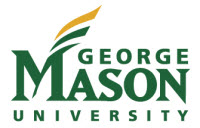Below is a summary of the abstract you submitted. Presenting author(s) is shown in bold.
If any changes need to be made, you can modify the abstract or change the authors.
You can also download a .docx version of this abstract.
If there are any problems, please email Dan at dar78@pitt.edu and he'll take care of them!
This abstract was last modified on March 25, 2024 at 7:26 p.m..

Bacteriophages make up an abundant portion of the biosphere. Currently, about 25328 phages have been discovered across the globe. Of this number, 2703 were found in 2023 alone. Typhonomachy is a novel Gordonia phage that was amongst those discovered. It was isolated from the host Gordonia rubripertincta NRRL B-16540 from mulchy soil after rain at George Mason University (38.82968 N, 77.305838S), in Fairfax, Virginia. The plaque size was ~1mm (about 0.04 in) in diameter. It was sequenced using Illumina sequencing at the University of Pittsburgh. Typhonomachy showed significant sequence similarity to the cluster CT Gordonia phages, a cluster made up of only lytic phages. Its genome is 49,294 bp long and has a GC content of 60.1%. The Typhonomachy genome contains ~71 gene products. Phylogenetic analysis of cluster CT and related phages will be presented, elucidating the remarkable diversity found in the Gordonia phages. Typhonomachy belongs to the Siphoviridae family of phages with regular-shaped capsids and long flexible tails. The “Typhon” in Typhonomachy comes from Greek mythology; Typhon was the last God who battled with Zeus before his ascension as Ruler of Olympus.

